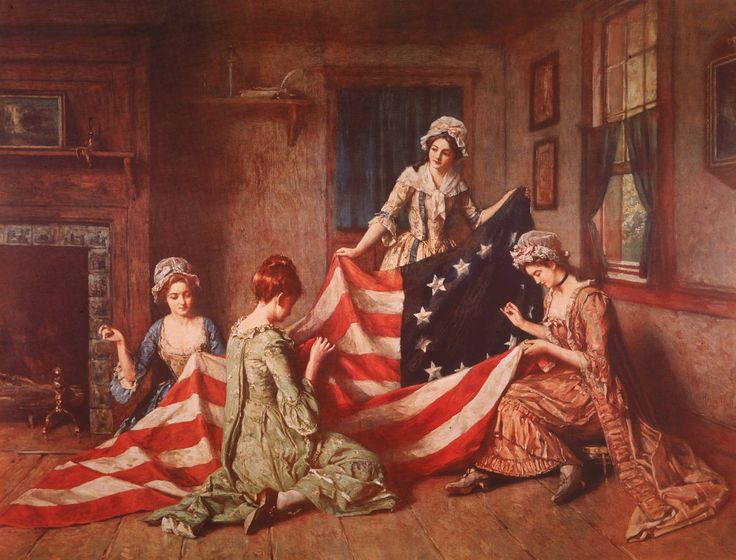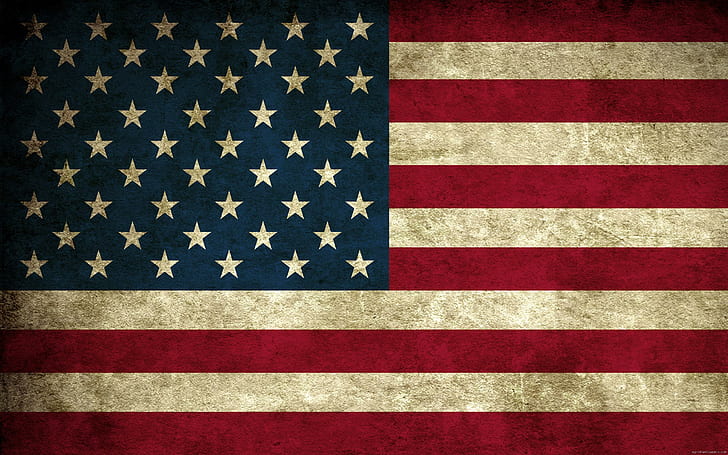
The American flag, often referred to as the Stars and Stripes, stands as a symbol of unity, resilience, and freedom for the United States of America. Throughout the nation’s rich history, the design and significance of the American flag have evolved, reflecting the growth and transformation of the country it represents. In this article, we embark on a captivating journey through the history of the American flag, exploring the key moments that have shaped its iconic design and enduring legacy.
Table of Contents
The Birth of the Stars and Stripes:

The origin of the American flag can be traced back to the Continental Army’s struggle for independence during the American Revolutionary War. The need for a distinctive flag to represent the fledgling nation became evident, and on June 14, 1777, the Continental Congress passed the first Flag Act, officially adopting the Stars and Stripes as the national flag. The design consisted of thirteen alternating red and white stripes symbolizing the original thirteen colonies, with a blue field in the upper-left corner containing thirteen white stars.
Read: 10 Lesser-known facts about the USA
Evolution of the Design:

See: Top hiking trails in the USA
As the United States expanded westward and new states joined the Union, the design of the American flag underwent several modifications. The addition of stars and stripes became a symbolic representation of the country’s growth, with the flag evolving to include 15 stars and 15 stripes by 1795. However, it soon became apparent that adding a stripe for each new state would make the flag unwieldy.
- How to Switch Car Insurance Companies Without a Hassle
- Spinning a Yarn of Fun: The Pin Up Betting Platform Ultimate Review
- Secrets of Creating Ultimate Man’s Cave
- Experience Pure Audio Bliss with OnePlus This World Music Day
- Kroll’s Celebrity Brand Valuation Report: Virat Kohli Reclaims Top Spot
Read: Unknown facts about Thanksgiving
In 1818, Congress passed the Flag Act of 1818, which reverted to the original thirteen stripes while declaring that new stars would be added for each state admitted to the Union. This decision ensured that the American flag retained its distinctive design, balancing historical continuity with the nation’s expansion.
See: 700K Years: A Greek Odyssey
The Star-Spangled Banner:
One of the most iconic moments in the history of the American flag occurred during the War of 1812. The Battle of Fort McHenry in Baltimore inspired Francis Scott Key to pen the poem “Defence of Fort M’Henry,” which later became the lyrics to the United States national anthem, “The Star-Spangled Banner.” The sight of the American flag, proudly waving over the fort despite the relentless bombardment, became a symbol of American resilience and determination.
Old Glory and Modern Times:
During the Civil War, the American flag took on heightened significance as both the Union and Confederate armies used variations of the Stars and Stripes. Union soldiers referred to their flag affectionately as “Old Glory,” a nickname that has endured through the years and become synonymous with the enduring spirit of the United States.

In the 20th century, the American flag continued to evolve in response to social and cultural changes. The addition of stars and stripes continued as states were admitted to the Union, and the flag became a powerful symbol during times of war and peace. It adorned the battlefields of World War II, stood as a symbol of hope during the Apollo moon landings, and served as a unifying force during the tumultuous 1960s.
Summary
The history of the American flag is a tapestry woven with threads of resilience, patriotism, and unity. From its humble beginnings during the American Revolutionary War to its iconic status as a symbol of freedom and democracy, the Stars and Stripes continue to inspire generations of Americans. As we gaze upon the flag, we are reminded of the nation’s journey, marked by triumphs and challenges, yet steadfast in its commitment to the principles that define the United States of America. The American flag stands tall, a testament to the enduring spirit of a nation united under the Stars and Stripes.
Frequently Asked Questions about the American Flag
Q1: What is the history behind the American flag?
A1: The American flag, also known as the Stars and Stripes, has a rich history dating back to the American Revolutionary War. It was officially adopted by the Continental Congress on June 14, 1777, with thirteen stars and thirteen stripes representing the original thirteen colonies.
Q2: How has the design of the American flag evolved over time?
A2: The design of the American flag has undergone several changes. Originally featuring thirteen stars and thirteen stripes, the flag evolved to include 15 stars and 15 stripes. However, the Flag Act of 1818 reverted to the original thirteen stripes and declared that new stars would be added for each state admitted to the Union.
Q3: What do the colors and symbols on the American flag represent?
A3: The colors of the American flag—red, white, and blue—have symbolic significance. Red symbolizes valor and bravery, white represents purity and innocence, and blue signifies vigilance, perseverance, and justice. The stars on the blue field represent the states, and the stripes represent the original thirteen colonies.
Q4: How many stars and stripes are on the current American flag?
A4: As of my last knowledge update in January 2022, the American flag has 50 stars, each representing one of the 50 states. The thirteen stripes still represent the original thirteen colonies.
Q5: Why is the American flag often referred to as “Old Glory”?
A5: The nickname “Old Glory” was given to the American flag by Captain William Driver, a 19th-century sea captain. He named his own personal flag “Old Glory,” and the term gained popularity, eventually becoming synonymous with the American flag itself.
Q6: Can the American flag be flown at night?
A6: Yes, the American flag can be flown at night, but it should be illuminated if displayed after sunset. According to the United States Flag Code, it is customary to display the flag from sunrise to sunset. If flown at night, the flag should be properly lit to ensure it remains visible.
Q7: Is there a specific way to fold the American flag?
A7: Yes, there is a prescribed method for folding the American flag. The traditional folding ceremony involves a series of thirteen folds, each carrying symbolic meaning. The folded flag is then presented to the next of kin at military funerals or other special occasions.
Q8: Can the American flag be worn as clothing?
A8: While it is not illegal to wear clothing with the image of the American flag, there are guidelines to follow out of respect. The U.S. Flag Code suggests that the flag should not be used as apparel, but if it is, it should be done in a way that does not disrespect the flag.
Q9: What holidays are associated with flying the American flag at half-staff?
A9: The American flag is flown at half-staff on specific occasions, including Memorial Day, Peace Officers Memorial Day, Patriot Day, and Pearl Harbor Remembrance Day. The President or state governors may also issue proclamations for flags to be lowered on other occasions of national significance.
Q10: Can the American flag be used for advertising purposes?
A10: The U.S. Flag Code discourages the use of the flag for advertising or commercial purposes. It is recommended to treat the flag with respect and not use it in a way that diminishes its dignity. If the flag is used in advertising, it should be done tastefully and in accordance with established guidelines.
Like reading short stories?
Check out our amazing Google Web Stories.




